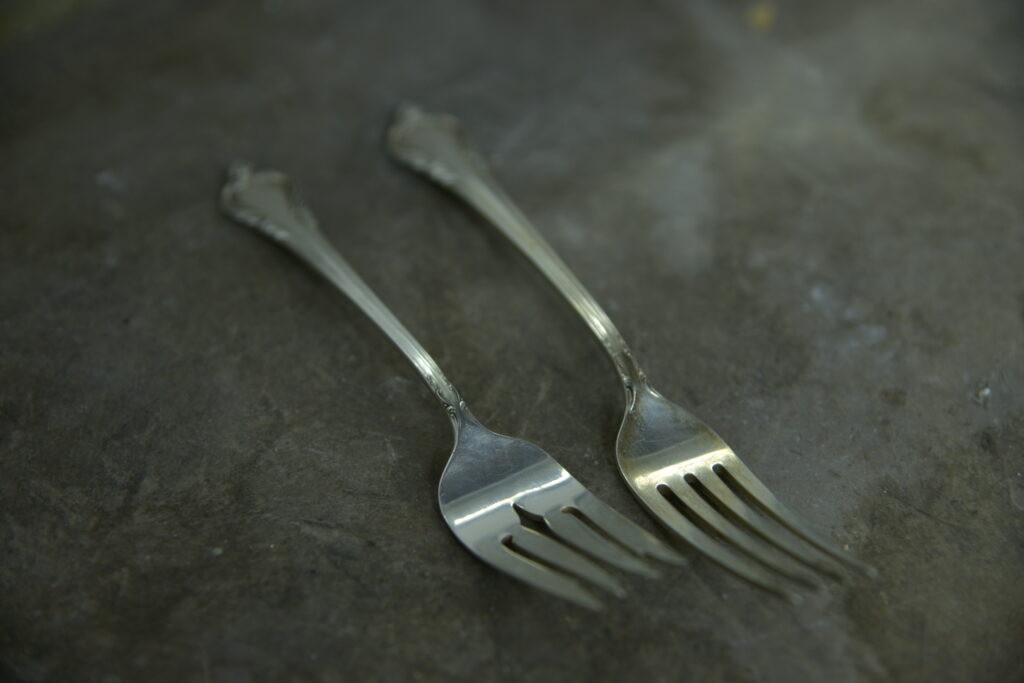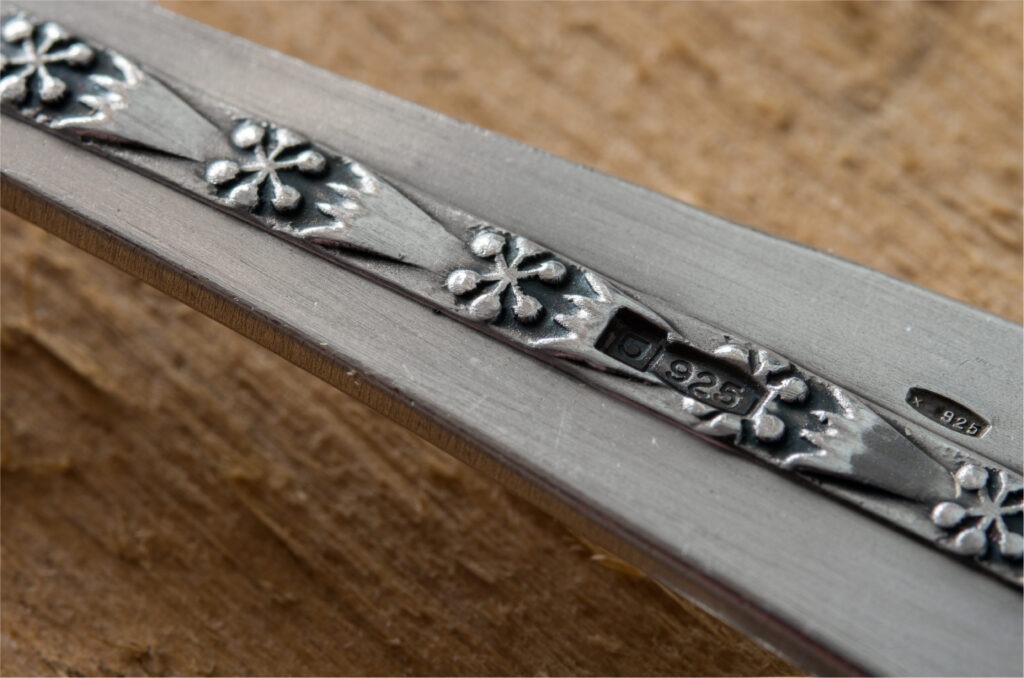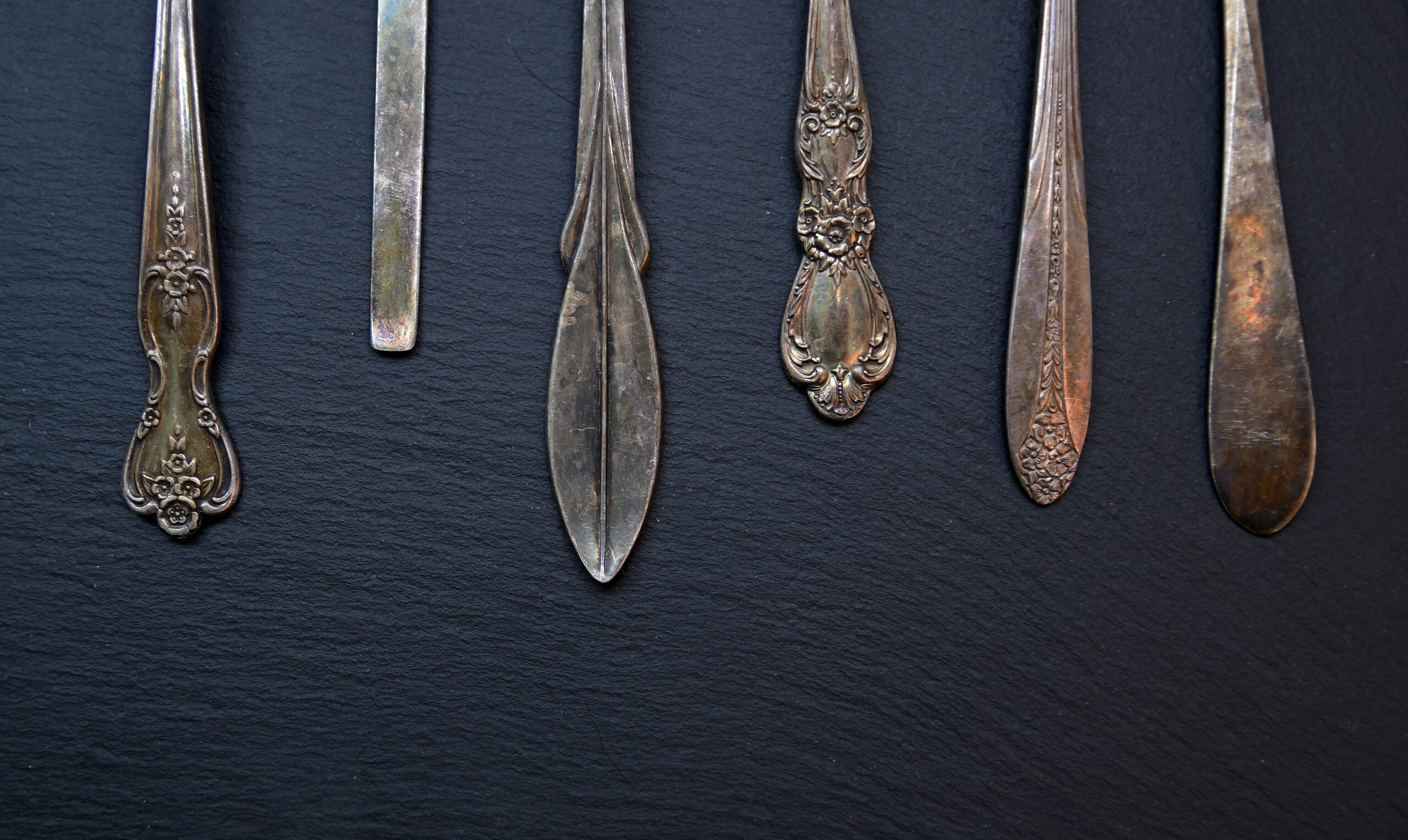
You might have an older relative in your family who’s known for having many of the family heirlooms, including the passed-down set of sterling silver dining ware that’s over 100 years old. When that antique silver dining set makes an appearance, have you noticed a slight brown hue to it? Maybe you’ve even been asked to polish the silver to make it shiny again. This type of silver, sterling silver, tarnishes because the silver alloy reacts to sulfur-containing compounds in the air, causing it to corrode and create silver sulfide.
It’s only natural for this silver alloy to corrode, so don’t be alarmed coming across sterling silver and it’s rusty-looking. If you have some in your possession, there are several things you should know about what else can cause sterling silver to tarnish, how you can take care of it and if you should sell it.
What Causes Silver To Tarnish
With jewelry, pure silver can’t be used to make a necklace or a ring because it’s so soft and malleable. So, to make silver easier to work with, metallurgists mix a little bit of copper with a batch of silver to make an alloy that we have come to know as sterling silver. The alloy consists of 92.5% silver and 7.5% copper, or another similar metal.

With even just a small amount of copper, metallurgists know the risk factors in making this alloy. By adding copper, the metal alloy is at risk of tarnishing because it could react to environmental agents in the air, alongside sulfur. Salty air, cosmetics, bleach, humidity, chlorine, human sweat, and pretty much anything under the sun can tarnish sterling silver. That’s likely why, after all these years, your relatives have stressed keeping the silverware tucked away.
What To Do With Your Sterling Silver Now
Now that you know the truth about sterling silver, you might be wondering how to take care of it so it doesn’t tarnish. To address this, there are several steps you can take to better care for your sterling silverware.
First, to see if you have sterling silver, check your piece to see if it’s stamped with a “925” marking. This is the 92.5% silver we discussed earlier. If you have that marking, you’re in the clear.
Next, you’ll want to polish your sterling silver by putting it under warm water and gently washing it with a cellulose sponge and mild dish soap. Rinse the silver and dry it fully with a piece of cotton cloth. For proper storage, wrap it in tarnish-resistant cloth, place it in a sealed bag, and store in a cool area.
With your silver safely tucked away, the question of its worth remains. The truth is, although sterling silver isn’t pure silver, it’s still quite valuable. There is a reason silverware is passed down from generation to generation, and that’s because it’s treated as an asset. So, if you’re looking for ways to get some extra cash, selling your sterling silverware shouldn’t be off the table.
Consider getting cash for silver and selling your sterling silver now by clicking here.
Established in 1892, we have more than a century of experience in refining precious metals. We serve various industries, including dental offices, private individuals, jewelers, pawnbrokers, and more! Call us today at 888-677-9254 to find out why Garfield is a premier precious metals refinery.

